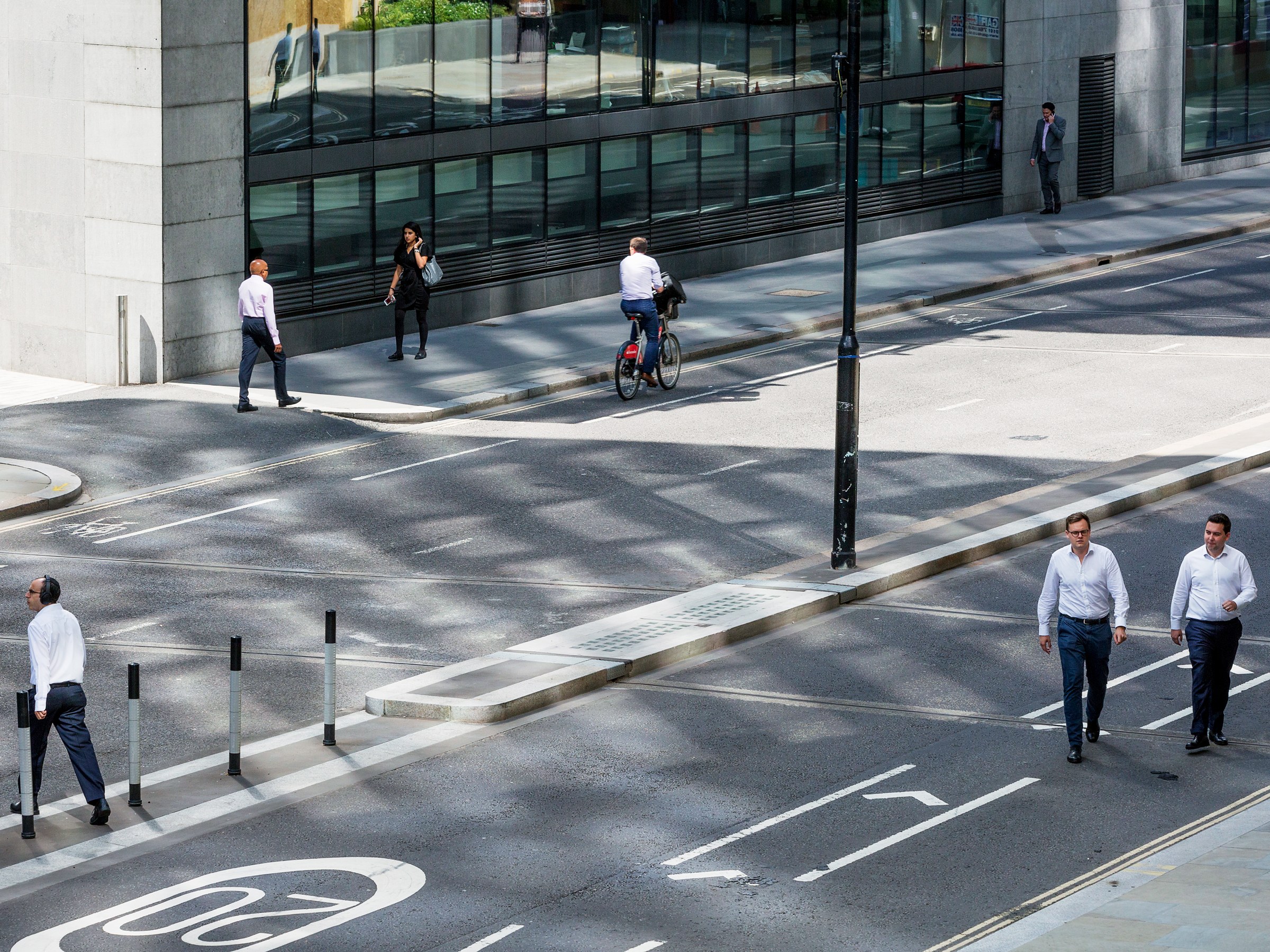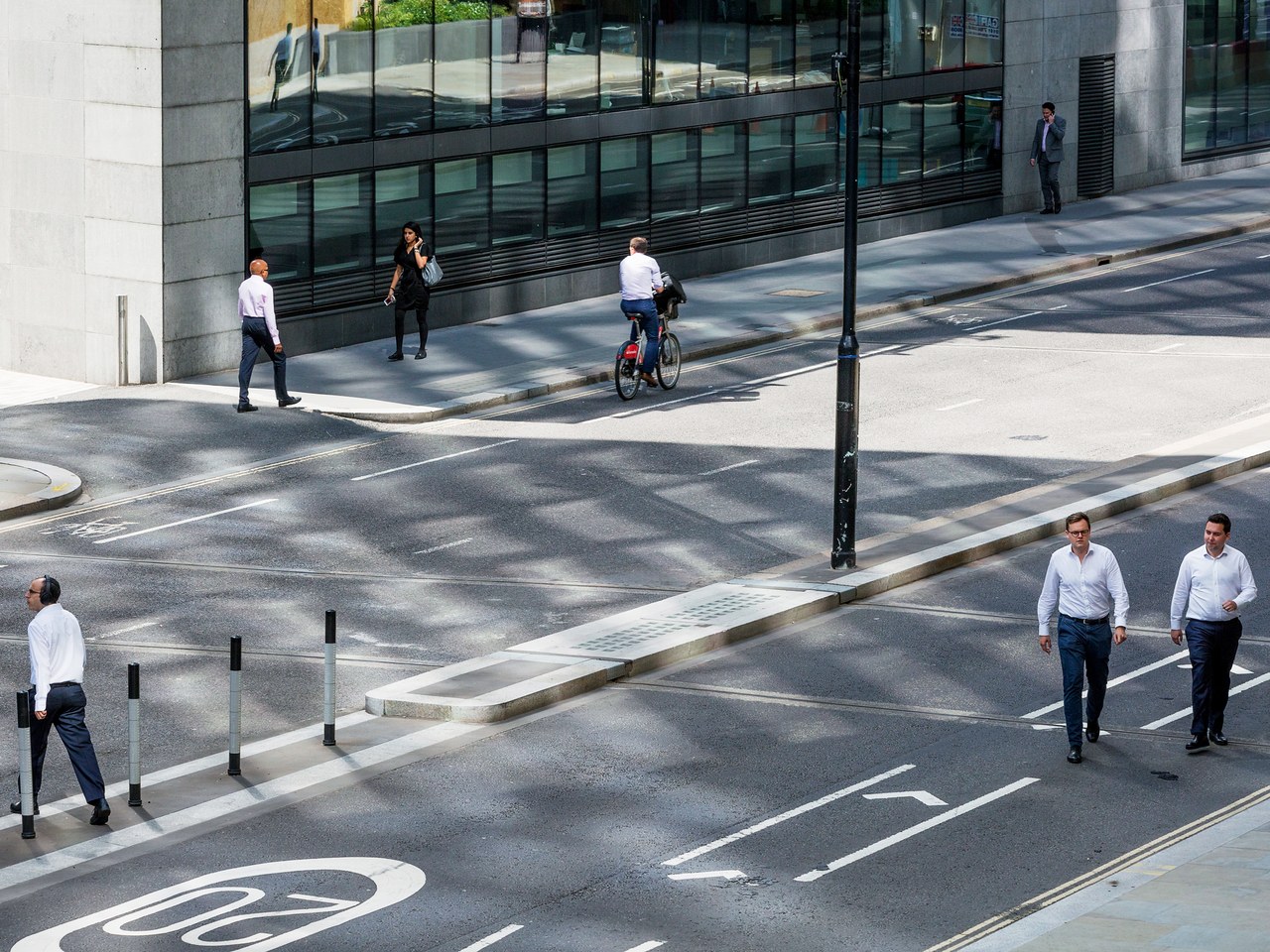

The City of London’s guidelines specify acceptable wind levels for sitting and walking. They dictate wind-tunnel tests and computer simulations to predict how a new building will meet those, and where measurements should be taken—including cycling paths and points where wind speeds can change suddenly, like near building corners. While they’re not legally binding, developers who want their projects approved by the municipal government would do well to follow the standards, says Ender Ozkan, an engineer with wind specialist firm RWDI, who helped create them.
Over the past 2 1/2 years, his team ran studies of how wind moves through the area’s cluster of high-rises and hosted workshops for municipal officials and industry types. They put interested parties in their wind tunnel near London to sit, walk, and try to read the newspaper in various conditions. Based on the results, they created a modified version of the Lawson scale, a set of criteria used mostly in the UK, which dates from the 1970s. It dictates what levels of wind (in common conditions) are tolerable for a range of activities. Lawson said speeds between 18 and 20 mph were fine for “business walking”—you’re not happy, but you’re safe and you’ll get where you’re going. The new scale calls wind above 18 mph “uncomfortable,” and the guidelines say it’s only suitable for spaces where people rarely walk. Ozkan’s team also created a new category called “frequent sitting,” with outdoor cafés and restaurants in mind, where wind shouldn’t exceed 5.6 mph. “Occasional sitting” allows for speeds up to 9 mph, and refers to places like public benches.
Engineers and architects who want to tame the wind have a variety of tools at their disposal, says Chris Letchford, who runs the civil and environmental engineering department at Rensselaer Polytechnic Institute. Buildings that taper as they ascend limit how much wind they send shooting toward the ground (and help structurally, too). The tiers of a structure like the Empire State Building shunt downwashing air away from the building before it hits the ground. So do awnings. Open spaces at street level limit wind speeds around New York’s Citigroup Center and London’s “Cheesegrater.” Simple things like plastic screens, movable walls, and vegetation can help block the wind, Letchford says. “It’s not always marvelous.”
Even with these newly strict guidelines, developers in the City of London have it relatively easy: It’s not that windy a place. Cities on large bodies of water are far gustier. But some in North America are looking to improve quality of street life by following London’s lead. Boston, Toronto, and San Francisco are all working with Ozkan’s firm to update their wind guidelines. In San Francisco, RWDI is gathering data to better understand how the city shapes the air—the current model is based on data that’s more than 50 years old, when the 18-story Federal Building was the tallest thing around.
The city has asked the firm to consider cyclists in its work, says Hanqing Wu, a microclimate specialist who works in the firm’s Canada office. They haven’t yet put a casual cyclist in their wind tunnel (they have done testing related to bike racing), but may well soon, he says. And for the people who look like ants to those living way high up, that work could make life on the ground a bit less breezy and a bit more easy.
More Great WIRED Stories
read more at https://www.wired.com/latest by Alex Davies
Tech









